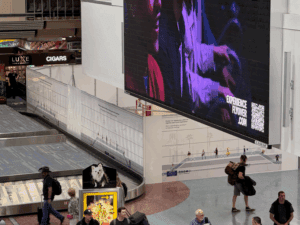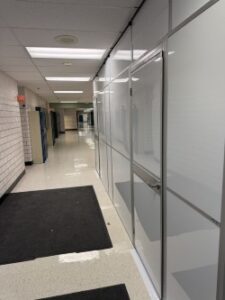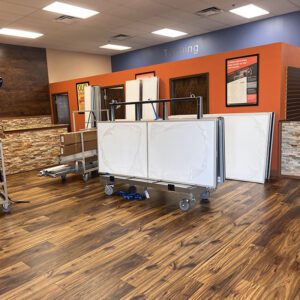How Schools and Universities can Benefit from Temporary Walls
In the ever-evolving landscape of education, institutions are constantly seeking innovative solutions to common problems. One such solution is the utilization of Temporary Wall Systems (TWS) within schools and universities. TWS modular walls offer a myriad of benefits, ranging from preventing classroom disruptions to promoting sustainability. Let’s delve into how schools and universities can benefit from temporary walls.
Preventing Classroom Disruptions
- Noise Reduction: One of the challenges educators face is maintaining a focused learning environment with noisy renovations or construction work within the premises. Temporary walls serve as a practical solution by effectively reducing noise disruptions. Our modular walls are designed with a urethane form core to dampen construction noise. Whether it’s the buzz of power tools or the noise of construction activities, our temporary walls act as sound barriers, ensuring that classrooms remain conducive to learning.
- Dust Control: These walls play a crucial role in maintaining cleanliness during renovation projects. They act as a barrier against dust and debris, thereby preserving the overall hygiene of the learning environment. This not only ensures the health and well-being of students and staff but also minimizes the need for extensive post-renovation cleaning efforts.
Lab Rooms: Ensuring Clean and Contamination-Free Environments
In science and research-oriented educational institutions, maintaining sterile environments within laboratory settings is paramount. Temporary walls can be instrumental in creating cleanrooms and anterooms, effectively preventing contamination risks. Our walls can be outfitted to exceed ICRA IV classification with HEPA filtration.
By segregating lab spaces during renovations or expansions, TWS ensures that experiments and research activities proceed without compromising safety or scientific integrity. This not only safeguards ongoing projects but also upholds the institution’s commitment to maintaining high standards of research excellence.
Sustainable Solution for Carbon-Neutral Schools
As the world embraces sustainability practices, educational institutions are increasingly adopting eco-friendly initiatives. Temporary walls align seamlessly with these efforts, offering a reusable renovation solution that minimizes environmental impact. Unlike traditional construction methods that often result in significant material waste, TWS can be dismantled and reused multiple times, reducing the carbon footprint associated with renovation projects. For schools and universities committed to sustainability, integrating temporary walls into their infrastructure represents a tangible step towards achieving carbon neutrality and environmental stewardship.
Branded for School Spirit
In addition to their practical benefits, temporary walls can also serve as powerful communication tools, sparking excitement and anticipation for upcoming changes within the educational institution. By wrapping these walls with vibrant graphics and informative visuals, schools and universities can effectively showcase future developments such as new facilities, programs, or initiatives. This not only keeps stakeholders informed but also fosters a sense of community engagement and involvement in the institution’s growth trajectory.
Crowd Control and Event Management
Beyond everyday classroom applications, temporary walls can also serve as invaluable assets for crowd control and event management within educational institutions. By strategically constructing walls to create designated corridors or partitions, schools and universities can efficiently manage large gatherings, such as conferences, seminars, or sporting events. This not only enhances safety and organization but also ensures a seamless and enjoyable experience for attendees.
Adaptable to Any Space
One of the most notable advantages of temporary walls is their adaptability to different spaces. Whether it’s dividing a large lecture hall into smaller classrooms or creating flexible collaborative spaces, modular walls can be swiftly installed and customized to fit any layout or configuration. With TWS, educational spaces remain adaptable to evolving needs, such as accommodating fluctuating student populations or facilitating dynamic teaching methodologies.
Conclusion
In conclusion, temporary walls represent a versatile and indispensable asset for schools and universities seeking to enhance their learning environments. From mitigating disruptions during renovations to promoting sustainability and fostering community engagement, the benefits of TWS extend far beyond their practical applications. By embracing these innovative solutions, educational institutions can create dynamic, adaptable spaces that empower students and educators alike to thrive in an ever-changing world.


